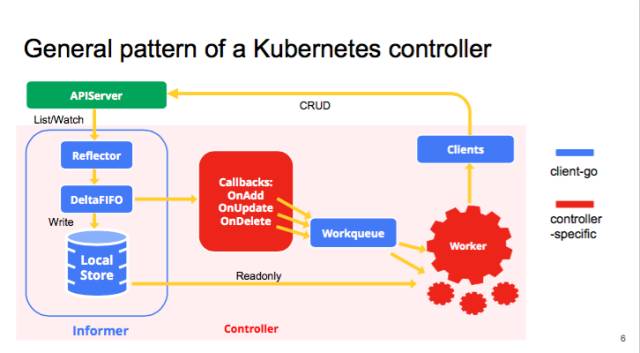
Firstly, the controller needs to communicate with the apiserver, so there should be a client. And the client request you to tell it
Then you can use the client to listWatch on specific type of kubernetes resource.
For higher performance, it is recommended to use the informer instead of polling apiserver.

informer lists/watches the apiserver and stores the resources in local cache .ResourceEventHandler when the add/update/delete events occur.lister without connecting to apiserver.Clientset contains the clients for groups. Each group has exactly one version included in a Clientset.
A dynamic client that can perform generic operations on arbitrary Kubernetes API objects.